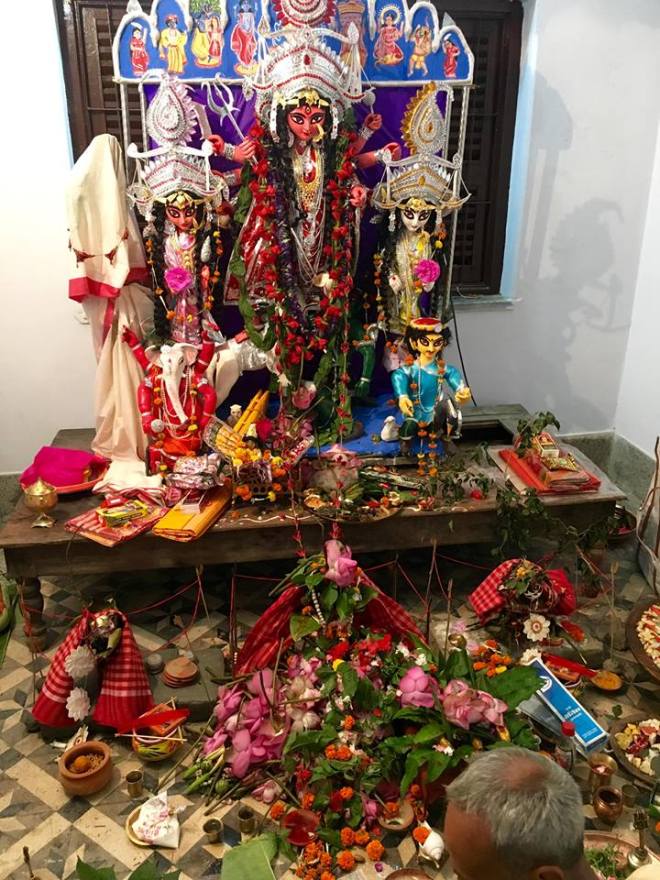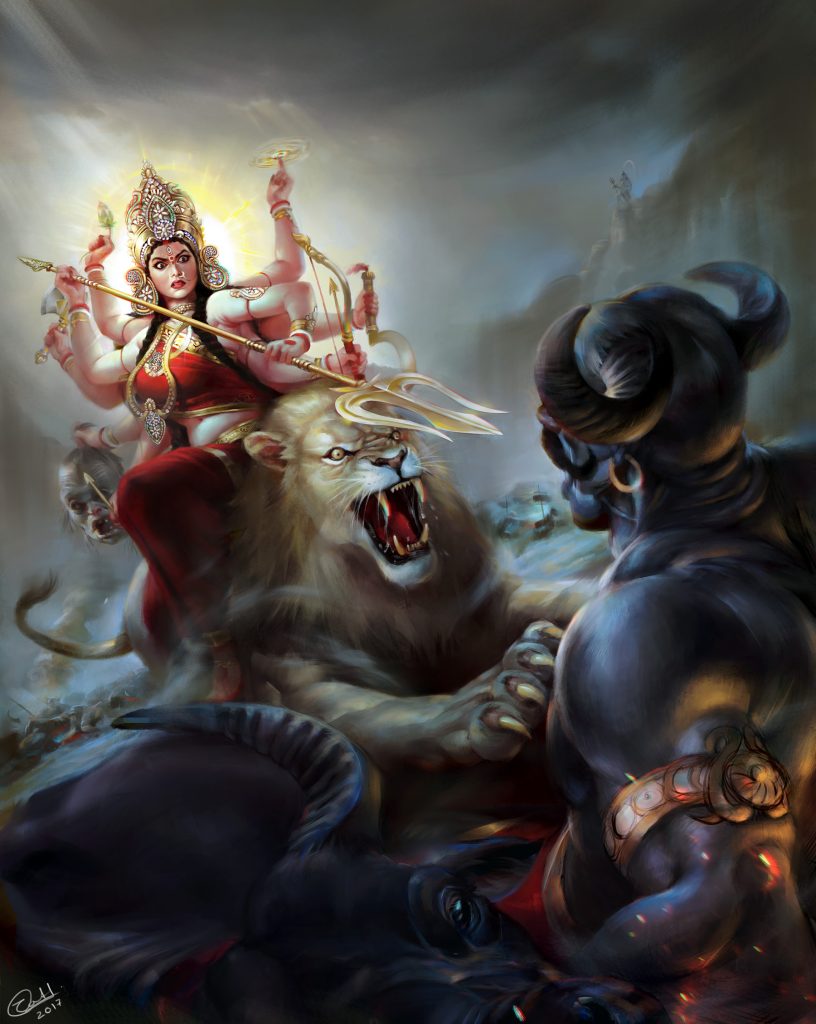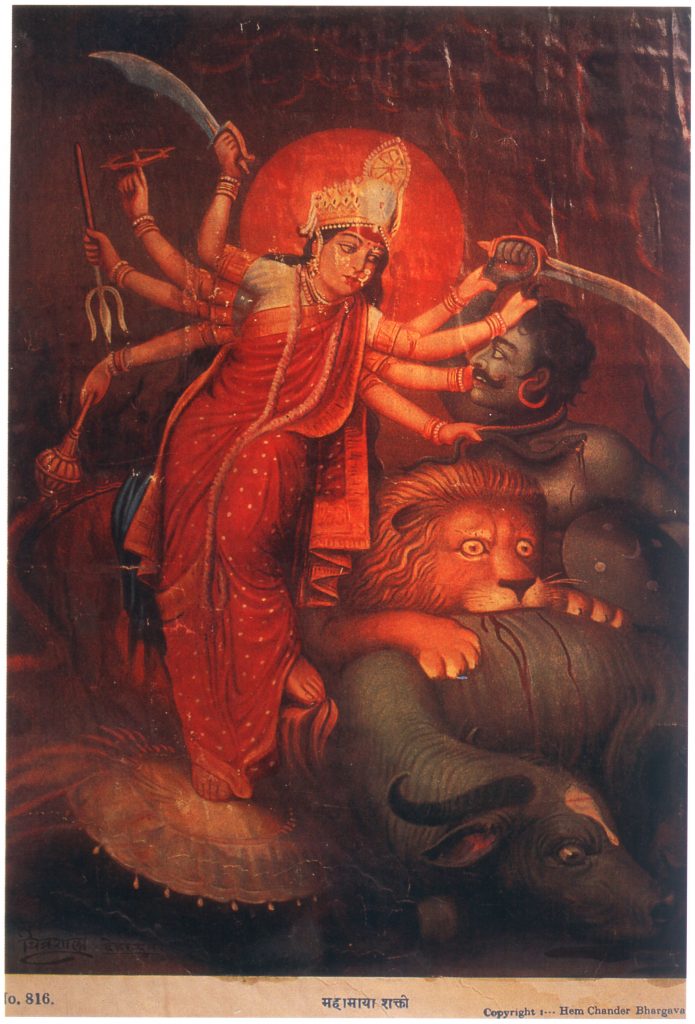The spirit of the Pujo is something else in Kolkata.
Kolkata. The name evokes memories of history, heritage, art, food…and Durga Puja. As the flight descends on this city, a breathtaking view emerges. Kolkata, dressed in all its finery, all set to welcome Maa Durga. The festive atmosphere is unparalleled, the enthusiasm undiminished. The taxi meanders through tight lanes, with people spilling over each other, yet walking on, witnessing the spectacle that is Durga Puja. For Durga is in every corner, every lane, every rajbari…
One often wonders when this festival actually started. Was it this way even a hundred years back? Origins differ, but consensus is that the age old zamindars of Bengal started this public celebration, and it grew over the years to become what is now called the largest outdoor art festival on earth. Every year, pandals compete with each other in coming up with innovative, or creative pujos as they are known locally, and well, the result is just too mesmerising to limit itself to a description of a few mundane words. Tourists and locals alike, walk all over the city, hopping from pandal to pandal, absorbing the atmosphere, and having one big party.
But some get to witness a more personal experience. Barir pujo, or house pujas, are conducted in many traditional houses, big and small. It is a tough task, not only due to the expense but also due to the time and effort it takes to organize one over a period of 10 days. The most traditional houses make their own idols…and in some, the head of the house makes the idol himself. What an experience that is…making the Goddess come to life, the passionate devotion, where hours and days do not count, the hands only rest when the eyes are finally painted thus bringing the Goddess to life…
As the Vedic chants take over, the chimes of the dhaak and the blowing of the shank rent the air, and the devotees welcome Maa into their home, worship her, take care of her. They are happy that she has graced their abode, and they do their best to make her happy. A lot of pujas take place during this 10-day period, each day and each puja having a significance and a purpose. Guests, known and unknown, come home to see Maa Durga, pray to her, and ask for blessings. It is a period when nothing else matters, just worship and celebration.
On the 10th day, the final set of pujas are conducted. Guests are fed, and preparations are made for the final farewell. Sindur Khela, where married women of the house smear vermillion on each others faces and celebrate by praying to Maa Durga and feeding her, marks the bidding farewell. The head of the house then leads the procession towards the Ganga ghat, where the Goddess will be immersed, with cries of Joy Maa Durga, and asking her to return the next year, again and again…
Back home, one feels a vacuum. Her presence is still there, yet one misses the fervour of the past few days…a bittersweet moment. One sits back and thinks about how a seemingly passive idol can invoke such passion and devotion…so much caring…so much love…


A very successful Bollywood movie called PK, starred Aamir Khan and had quite a few non-complimentary things to say about worshipping stones. Those priests make you a fool, it claimed. God resides everywhere, not in lifeless idols. Well Mr. Aamir Khan, a stone is a stone. But it is the beauty of the human spirit, the emotional connect that binds us as human beings, the love that is so hard to describe but so easy to feel, that brings life into that stone. An idol is a personification of the love that we as humans have for God, it is this love that can make us see God in anything. It is this love that brings tears of joy into our eyes as we see the Goddess drift away…knowing that she will return. Not because she isn’t everywhere already, but because she would like to see us celebrate once again next year. God is happiness, God is celebration, and God is in you. Once in a while however, God has to remind us of this.
And that is why she makes us create, celebrate and then let go. Do you want to experience the God in you? Visit a barir pujo in Kolkata. You may just fall in love…AGAIN.
Read the previous part here…
The armies of the devas were mesmerised. They chanted in unison as their spirits rose after witnessing this huge spectacle. From his palace, Mahishasura wondered what was happening, and walked up to his window only to see nothing but a dazzling light. This was the glory of Devi Durga, and Mahishasura knew that he had to fight once again.

The epic battle began…
Millions of asuras attacked the Devi, but she cut them down like child’s play. Her breaths became her armies, and the embodiment of the devas set about destroying the armies of Mahishasura.
His general fought hard. Chiksura and Chamara, Udagra and Mahahanu, Asiloman and Baskala, Privarita and Bidala – they commanded millions of asuras on chariots, elephants and horses, and they all attacked the Devi in that battle.
Mahishasura himself was surrounded by millions of chariots, horses and elephants. Other asuras fought with iron maces and spears, clubs, swords and battle-axes. They tried to strike her; she showed on them her own weapons and cut them to size. With no sign of fatigue, Devi Ishvari hurled weapons at the asuras and killed them by the thousands. The mount of the Devi, the mighty and ferocious lion, shook it’s mane in rage, and ploughed through the asura legions like a blazing forest fire. The sighs of Devi Ambika became her battalions and they fought the asuras, destroying them and marching ahead.

Of these battalions, some beat drums and others blew conches, and rent the air with battle cries. The Devi killed hundreds of asuras with her trident, mace, showers of spears and swords, and threw down others who were stupefied by the clanging of her bells. Binding others with her noose, she dragged them on the ground. Some were split into two by the sharp fall of her sword, and others, smashed by the blows of her mace, lay down on the ground while some who were severely wounded vomited blood. It was carnage everywhere. Some asuras lost their hands, others their legs, and thousands of heads rolled. Streams of blood flowed all over, and the lion of the Devi, roaring loudly, prowled about in the battlefield. The battalions of the Goddess fought in such a manner with the asuras that the gods were pleased and showered flowers from heaven.
Seeing his armies being slaughtered in this manner, Chiksura rushed ahead and confronted Goddess Ambika. He let loose a shower of arrows and spears on her, but she cut them all down, and killed his horses and charioteer. She then broke his bow into pieces. Chiksura grabbed his sword, jumped off his chariot and attacked the Devi. He struck the lion on the head and hit the Devi on her left arm. As soon as the sword touched her arm, it shattered into pieces. An enraged Chiksura hurled a spear at Bhadrakali, but it was broken into two by the spear that the Devi countered with. Her spear went on to pierce his heart, and Chiksura died on the spot.
Chamara now led the attack. Mounted on a huge elephant, he hurled his spear at the Devi, but it failed to find it’s mark. The lion then leapt up, and stretching its paws, pounced on Chamara to bring him down to the ground.
Chamara fought back, but it was too late. The lion sprung high, and as it descended, severed Chamara’s head with a fatal blow.
The other asura generals met with a similar fate. Udagra was killed in the battle by the Devi, Karala was brought down by her sword. She then pounded Uddhata with blows of her mace, and killed Baskala with a long spear. In full flow, and brimming with energy, Goddess Isvari killed Ugrasya, Ugravirya and Mahahanu with her trishul. With her sword she struck off Bidala’s head from his body, and both Durdhara and Durmudha quickly met their death at her hands.
His generals lay dead. A large part of his vast army had been annihilated. Mahishasura’s rage knew no bounds. He assumed the form of a large buffalo, and charged into the troops of the Devi, killing scores with his horns, trampling thousands underfoot, and lashing at others with his tail. Some he laid low on the face of the earth by sheer speed, some by his bellowing and wheeling, and others by the blast of his breath. There was no stopping him – the earth trembled, the clouds vanished and he lifted mountains and brought them crashing onto the battalions of the Devi.

Having destroyed her armies, Mahishasura rushed to slay the lion. The Goddess transformed into her Chandika avatar, flinging her noose over Mahishasura in an attempt to bind him. The great asura was not easy to overcome; he transformed himself into a lion and freed himself. Chandika swiftly cut off the lion’s head, but Mahishasura transformed into a man, and with his sword, rushed towards her. The Devi cut him down, and Mahishasura became a huge elephant and, with a huge roar, pulled down the lion with his trunk. The Devi responded by cutting off the trunk with her sword, and Mahishasura once again transformed himself into a buffalo and shook the three worlds with his rage.
An enraged Chandika decided to end it once and for all. She had soma from the cup that the devas had given her, and her eyes turned red with anger. Mahishasura threw mountains at her, but she cut them down with a barrage of arrows. She then jumped high and landed her foot on the asuras neck, pinning him down.
Her spear pieced his chest, as Mahishasura managed to emerge from his buffalo rupa, but only partially. Chandika then switfly cut off his head with her sword, and Mahishasura was finally slain.
Seeing Mahishasura fall, the entire legions of the asura armies perished. The devas celebrated and showered flowers on Devi Chandika, and sang praises in her name. The Devi, the mother of the worlds, had brought an end to the tyranny of the all-powerful leader of the asuras.
अयि शतखण्ड विखण्डितरुण्ड वितुण्डितशुण्द गजाधिपते
रिपुगजगण्ड विदारणचण्ड पराक्रमशुण्ड मृगाधिपते ।
निजभुजदण्ड निपातितखण्ड विपातितमुण्ड भटाधिपते
जय जय हे महिषासुरमर्दिनि रम्यकपर्दिनि शैलसुते ॥ ४ ॥
Ayi satha kanda, vikanditha runda,
Vithunditha shunda, Gajathipathe,
Ripu Gaja ganda, Vidhaarana chanda,
Paraakrama shunda, mrugathipathe,
Nija bhuja danda nipaathitha khanda,
Vipaathitha munda, bhatathipathe,
Jaya Jaya He Mahishasura Mardini, Ramya Kapardini Shaila Suthe
ॐ देवी स्कन्दमातायै नमः॥
Om Devi Kushmandayai Namah॥
या देवी सर्वभूतेषु माँ स्कन्दमाता रूपेण संस्थिता। नमस्तस्यै नमस्तस्यै नमस्तस्यै नमो नमः॥
Ya Devi Sarvabhuteshu Ma Skandamata Rupena Samsthita।
Namastasyai Namastasyai Namastasyai Namo Namah॥
